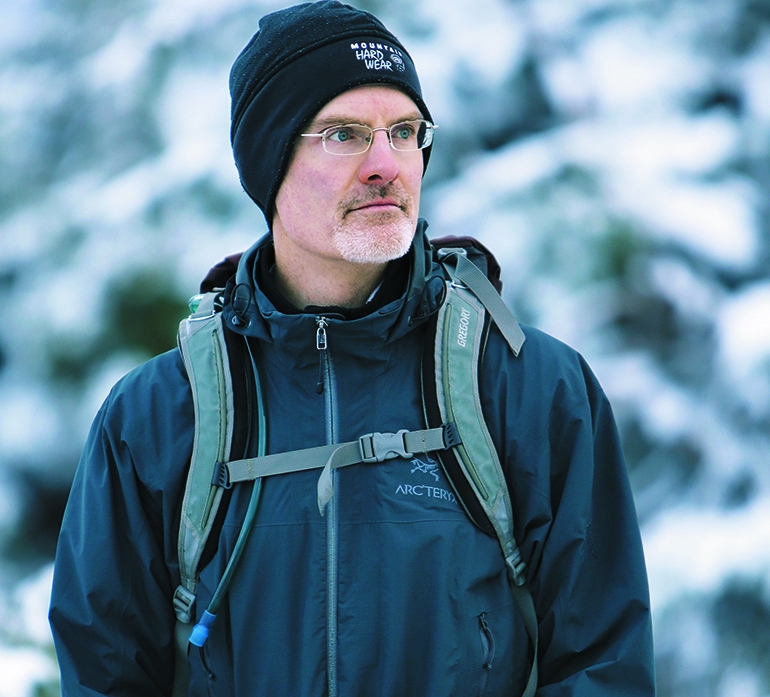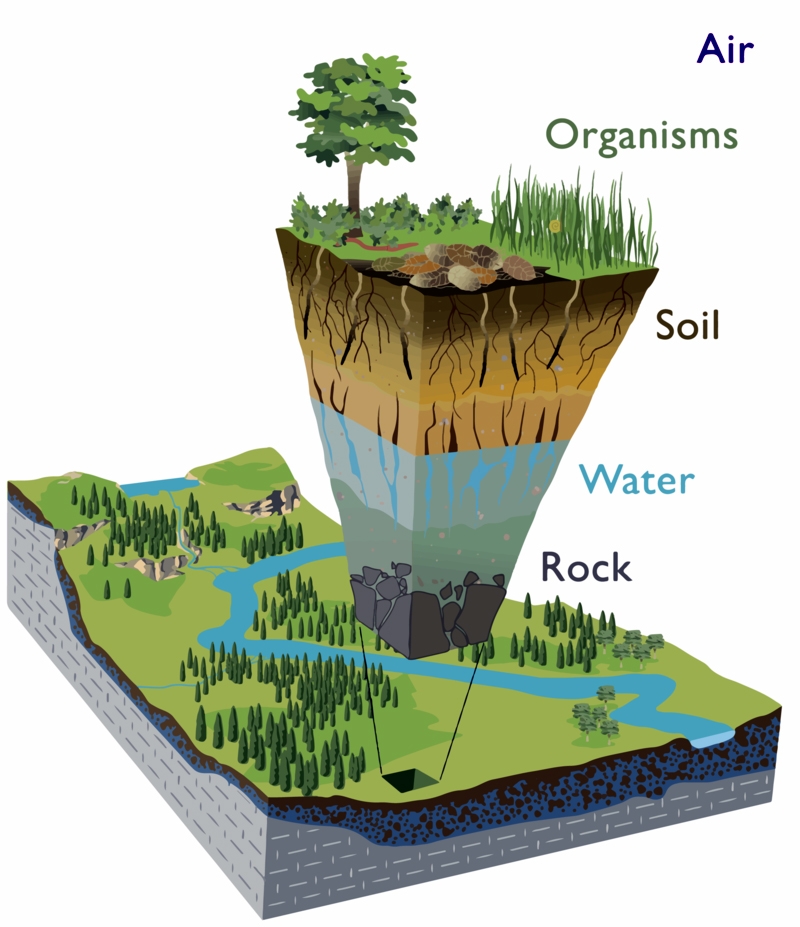Professor Jeff Munroe to Lead 5-Year National Science Foundation Project

MIDDLEBURY, Vt. – The National Science Foundation (NSF) has awarded a major five-year grant to a research team led by Jeff Munroe, the Philip Battell Stewart and Sarah Frances Cowles Stewart Professor of Geology. Six scientists representing five different institutions will study how mineral dust from deserts in the southwestern U.S. is transported through the atmosphere to locations hundreds of miles away and the impacts of the exported dust on a variety of environmental and health issues.
The team will focus their work on the small particles of weathered rock and soil that are picked up in one place by the wind, transported through the atmosphere by air currents, and deposited somewhere else.
“Studies on the ground, instruments carried by airplanes, and observations from satellites in space over the past several decades have shown conclusively that this process, insignificant as it may seem, collectively is of enormous importance for moving nutrients, and sometimes contaminants, around the world,” said Munroe.
The scientists have established a cluster of sites in eastern Nevada and throughout Utah from which to conduct their work. They’ll examine the critical zone, a term used to describe the slice of the Earth from the treetops down to the bottom of the soil. Munroe describes it as the thin skin where geology, chemistry, biology, ecology, hydrology, climate, and human society all interact.

Earth’s Critical Zone. Illustration by Critical Zone Observatories (CZO) based on a figure in Chorover et. al. 2007.
“It’s not a stretch to say that what happens here, in this zone only a few hundred feet thick, is of more relevance to society than what happens in the hundred miles of atmosphere farther up, or in the thousands of miles of rock farther down,” said Munroe. “Think soils growing food, forests cleaning the air and generating oxygen for us to breathe, rain turning to stream- and groundwater, etc.”
Munroe’s team will include Kevin Perry, associate professor at the University of Utah, who will lead a project focused on dust-emitting landscapes, including seasonality and interannual variability of dust emission, the formation and effects of soil crusts, and modeling of dust transport; Maura Hahnenberger, assistant professor at Salt Lake Community College, who will investigate spatial, temporal, and meteorological aspects of dust transport from the Great Basin to the Rocky Mountains; Greg Carling, associate professor at Brigham Young University, who will focus on the geochemical properties of surface materials in dust source regions, the properties of dust deposited in the mountains, and effects on mountain watersheds; S. McKenzie Skiles, assistant professor at the University of Utah, who will lead an effort studying the effects of dust deposition on snowpack in the Wasatch Mountains east of Salt Lake City; and Janice Brahney, assistant professor at Utah State University, who will study the effects of dust deposition on the nutrient status of mountain ecosystems.
In his own study, Munroe will focus on dust deposition in the mountains and will expand and maintain a network of dust collectors in various mountain ranges across Utah and Nevada. The original dust collector network was established in part with a Gladstone Excellence in Teaching Award from Middlebury. As the overall director of the entire effort, Munroe will also coordinate the work of his five colleagues, unifying the data management strategies, arranging outreach efforts, and connecting with other researchers who will build projects of their own into the infrastructure.
The multiyear project will provide myriad opportunities for Middlebury undergraduates, says Munroe. For those interested in a field experience, there will be twice-annual trips to Utah and Nevada to empty the dust collectors. For those more interested in geochemistry, undergraduate researchers will assist in analyzing the dust samples with a variety of high-tech equipment, providing students with hands-on experience in sophisticated analytical techniques.
Some of the analysis—studying rare isotopes of some elements that can serve as a fingerprint to clarify where the dust came from, for instance—will be done in the Department of Geoscience at the University of Wisconsin, and Middlebury students will get to travel there to participate in those measurements.
“Because many of my colleagues participating in this project work at institutions with graduate programs, the Middlebury undergraduates who take part in this project will get to interact with and learn from master’s and PhD students,” said Munroe. “This will give them great insight into what graduate school is like, as well as a network of students to connect with for advice and ideas.”
The collection of connected projects also contains numerous outreach initiatives, including programs designed to increase the involvement of traditionally underrepresented demographics in field and lab science. Outreach programs are also planned with public high schools and middle schools in northern Utah.
Munroe’s project is one of 10 major initiatives the NSF is launching this fall aimed at understanding the connections among different places on the Earth’s surface. He says he’s looking forward to seeing what the other teams discover and how his team might interact with them.
“My main point is that ‘it’s all connected,’ said Munroe. “The Earth is one big system, and nothing exists in isolation from everything else. Dust is a great example of how processes in one location can affect the environment somewhere far away. We need more knowledge about those connections so that we can understand how the decisions we make locally will affect other places, other environments, and other people.”

